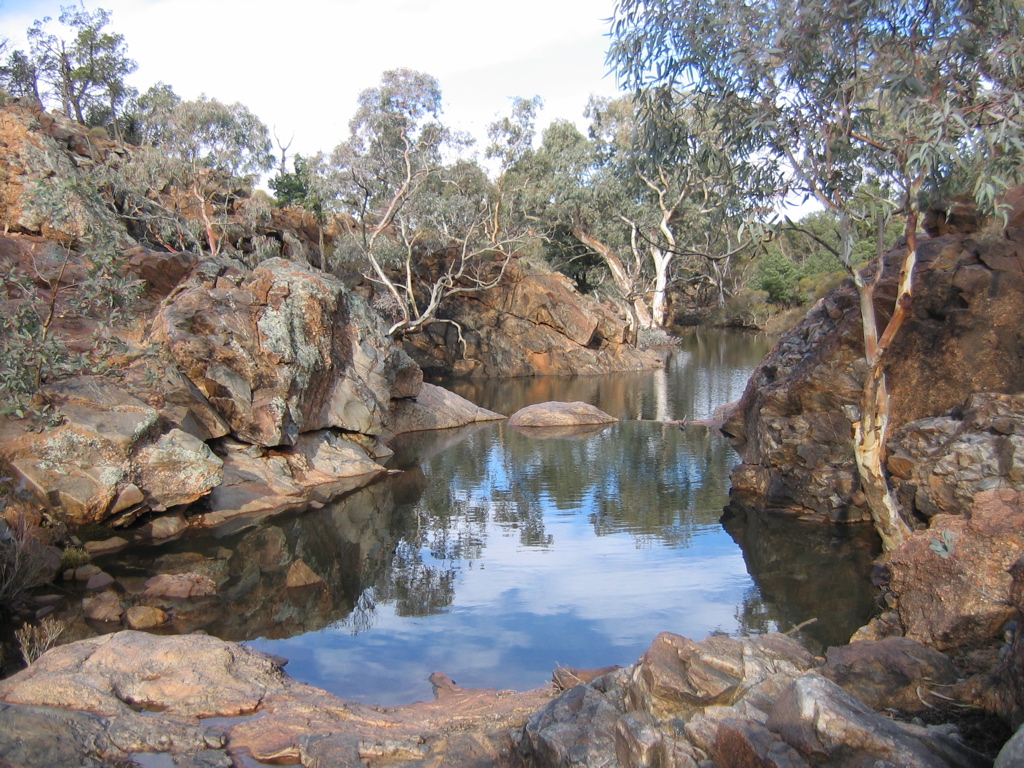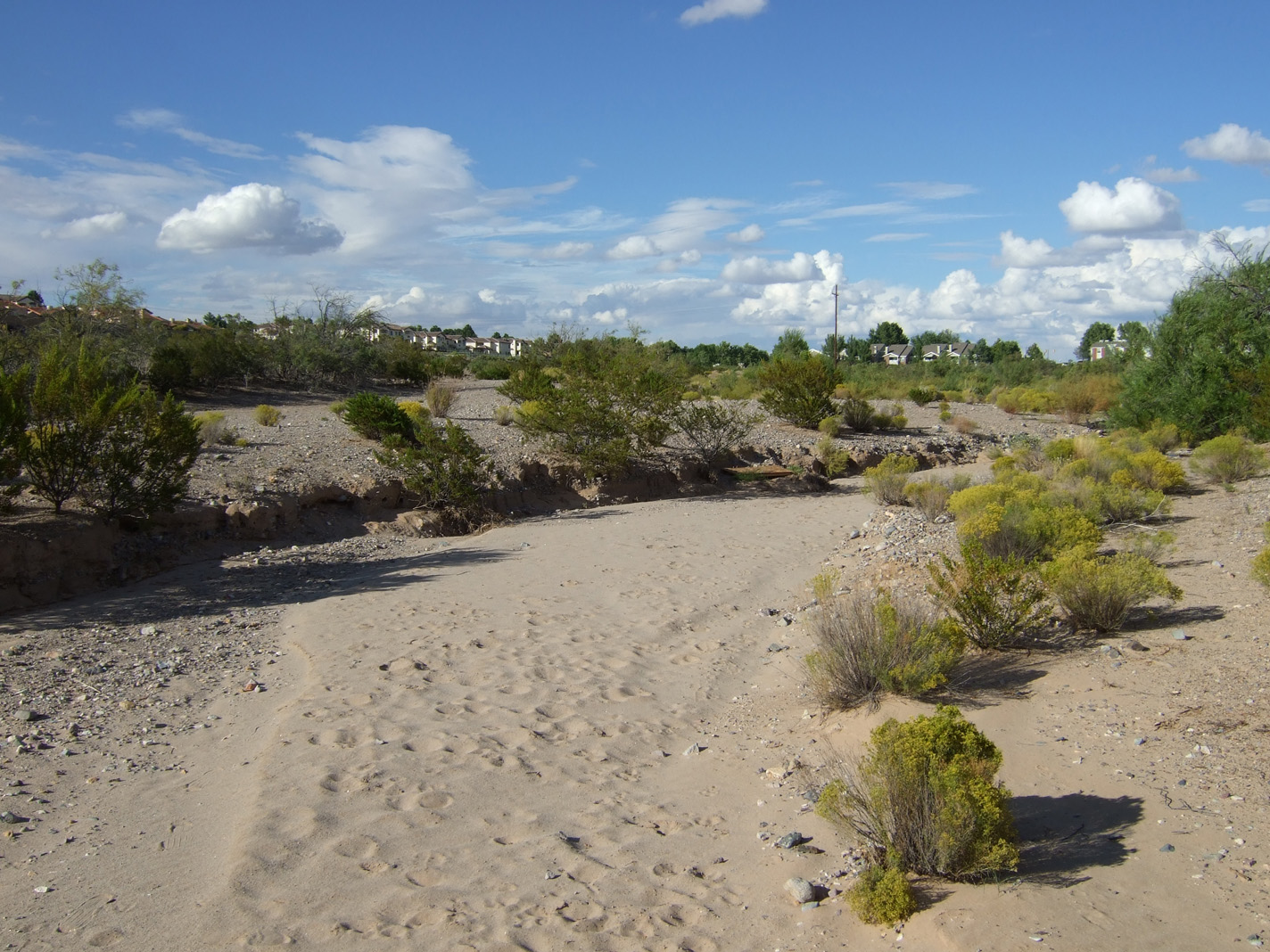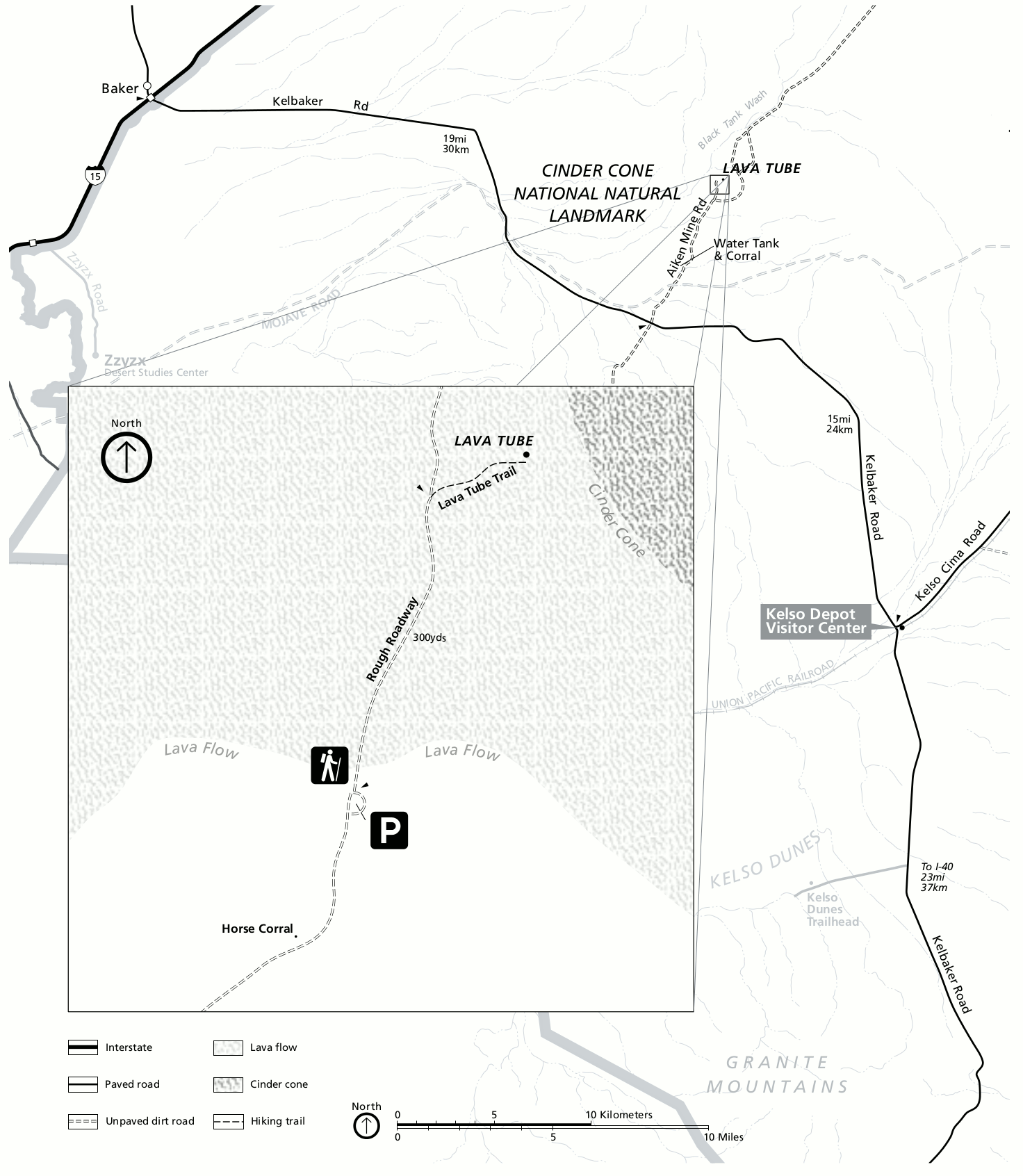|
Willow Wash (Seventeenmile Point, California)
Willow Wash is an ephemeral stream or wash in San Bernardino County, California. Its mouth is west northwest of Seventeen Mile Point at an elevation of . From Seventeen Mile Point, its course breaks up into several distributary washes that run west and southwest toward Soda Lake. The wash has its source at an elevation of 1379 feet, at north of the Marl Mountains The Marl Mountains are located in the Mojave National Preserve in eastern California in the United States, northeast of the Kelso Mountains. The Marl Mountains lie just east of Kelbaker Road, which connects the town of Baker with the small communit .... It runs southwest with heavy sands south and west of the Cima Volcanic Range and Volcanic Fields, parallels Kelbaker Road, turning northward until it reaches Seventeen Mile Point. References {{Coord, 35, 14, 10, N, 115, 56, 39, W, display=title Rivers of San Bernardino County, California ... [...More Info...] [...Related Items...] OR: [Wikipedia] [Google] [Baidu] |
Ephemeral
Ephemerality (from the Greek word , meaning 'lasting only one day') is the concept of things being transitory, existing only briefly. Academically, the term ephemeral constitutionally describes a diverse assortment of things and experiences, from digital media to types of streams. "There is no single definition of ephemerality". With respect to unique performances, for example, it has been noted that " hemerality is a quality caused by the ebb and flow of the crowd's concentration on the performance and a reflection of the nostalgic character of specific performances". Because different people may value the passage of time differently, ephemerality may be a relative, perceptual concept: "In brief, what is short-lived may not be the object itself, but the attention we afford it".Ronald Beiner, ''Political Philosophy: What It Is and Why It Matters'' (2014), p. 10. Ephemerality and nature Geographical features An ephemeral stream is that which only exists following precipitation ... [...More Info...] [...Related Items...] OR: [Wikipedia] [Google] [Baidu] |
Stream
A stream is a continuous body of surface water flowing within the bed and banks of a channel. Depending on its location or certain characteristics, a stream may be referred to by a variety of local or regional names. Long large streams are usually called rivers, while smaller, less voluminous and more intermittent streams are known as streamlets, brooks or creeks. The flow of a stream is controlled by three inputs – surface runoff (from precipitation or meltwater), daylighting (streams), daylighted subterranean river, subterranean water, and surfaced groundwater (Spring (hydrology), spring water). The surface and subterranean water are highly variable between periods of rainfall. Groundwater, on the other hand, has a relatively constant input and is controlled more by long-term patterns of precipitation. The stream encompasses surface, subsurface and groundwater fluxes that respond to geological, geomorphological, hydrological and biotic controls. Streams are importan ... [...More Info...] [...Related Items...] OR: [Wikipedia] [Google] [Baidu] |
Arroyo (creek)
An arroyo (; from Spanish arroyo , "brook"), also called a wash, is a dry creek, stream bed or gulch that temporarily or seasonally fills and flows after sufficient rain. Flash floods are common in arroyos following thunderstorms. '' Wadi'' (Arabic) is used in North Africa and Western Asia for similar landforms. The desert dry wash biome is restricted to the arroyos of the southwestern United States. Arroyos provide a water source to desert animals. Types and processes Arroyos can be natural fluvial landforms or constructed flood control channels. The term usually applies to a sloped or mountainous terrain in xeric and desert climates. In addition: in many rural communities arroyos are also the principal transportation routes; and in many urban communities arroyos are also parks and recreational locations, often with linear multi-use bicycle, pedestrian, and equestrian trails. Flash flooding can cause the deep arroyos or deposition of sediment on flooded lands. ... [...More Info...] [...Related Items...] OR: [Wikipedia] [Google] [Baidu] |
San Bernardino County, California
San Bernardino County (), officially the County of San Bernardino, is a county located in the southern portion of the U.S. state of California, and is located within the Inland Empire area. As of the 2020 U.S. Census, the population was 2,181,654, making it the fifth-most populous county in California and the 14th-most populous in the United States. The county seat is San Bernardino. While included within the Greater Los Angeles area, San Bernardino County is included in the Riverside– San Bernardino–Ontario metropolitan statistical area, as well as the Los Angeles– Long Beach combined statistical area. With an area of , San Bernardino County is the largest county in the contiguous United States by area, although some of Alaska's boroughs and census areas are larger. The county is close to the size of West Virginia. This vast county stretches from where the bulk of the county population resides in three Census County Divisions (Fontana, San Bernardino, and Vi ... [...More Info...] [...Related Items...] OR: [Wikipedia] [Google] [Baidu] |
Seventeen Mile Point
Seventeen Mile Point is a mountain at the north end of the Old Dad Mountains in San Bernardino County, California. Its summit is at an altitude of . History Seventeen Mile Point acquired its name because the northernmost ridge of the mountain was a landmark along the Mojave Road or Old Government Road. This ridge at which the Mojave Road rounded this northern tip of the Old Dad Mountains was called Point of Mountain. Odometer surveys by the U. S. Army in 1866 and 1867 found that Point of Mountain was about 17 miles away from both Soda Springs and Marl Springs, watering places along the road, and marked the point where the old wagon road turned southwest to follow the course of Willow Wash for several miles upstream. Seventeen Mile Point a mining camp, now a vanished ghost town Ghost Town(s) or Ghosttown may refer to: * Ghost town, a town that has been abandoned Film and television * ''Ghost Town'' (1936 film), an American Western film by Harry L. Fraser * ''Ghost Town' ... [...More Info...] [...Related Items...] OR: [Wikipedia] [Google] [Baidu] |
Distributary
A distributary, or a distributary channel, is a stream that branches off and flows away from a main stream channel. Distributaries are a common feature of river deltas. The phenomenon is known as river bifurcation. The opposite of a distributary is a tributary, which flows ''towards'' and joins another stream. Distributaries are often found where a stream approaches a lake or an ocean. They can also occur inland, on alluvial fans, or where a tributary stream bifurcates as it nears its confluence with a larger stream. In some cases, a minor distributary can divert so much water from the main channel that it can later become the main route. Related terms Common terms to name individual river distributaries in English-speaking countries are ''arm'' and ''channel''. These terms may refer to a distributary that does not rejoin the channel from which it has branched (e.g., the North, Middle, and South Arms of the Fraser River, or the West Channel of the Mackenzie River), or to on ... [...More Info...] [...Related Items...] OR: [Wikipedia] [Google] [Baidu] |
Soda Lake (San Bernardino County)
Soda Lake (or Soda Dry Lake) is a dry lake at the terminus of the Mojave River in the Mojave Desert of San Bernardino County, California. The lake has standing water during wet periods, and water can be found beneath the surface. Soda Lake along with Silver Lake are what remains of the large, perennial, Holocene Lake Mojave. The waters of the lake, now with no outlet, evaporate and leave alkaline evaporites of sodium carbonate and sodium bicarbonate. Soda Lake is located on the southern side of Interstate 15, and can be seen at the Zzyzx Road interchange and the Oat Ditch bridge, as well as the Soda Lake bridge (signed as the Mojave River) looking south from the city of Baker. See also * List of lakes in California * Kelso Wash * Zzyzx, California Zzyzx ( ), formerly Soda Springs, is an unincorporated community in San Bernardino County, California, within the boundaries of the Mojave National Preserve, managed by the National Park Service (NPS), an agency of the U.S. De ... [...More Info...] [...Related Items...] OR: [Wikipedia] [Google] [Baidu] |
Marl Mountains
The Marl Mountains are located in the Mojave National Preserve in eastern California in the United States, northeast of the Kelso Mountains. The Marl Mountains lie just east of Kelbaker Road, which connects the town of Baker with the small community of Kelso, California. Like the Beale Mountains to the east, the range is one of the smallest mountain ranges in the nation, and is only about four miles long. The Marl Mountains are often visited by travelers on the historic Mojave Road The Mojave Road, also known as Old Government Road (formerly the Mohave Trail), is a historic route and present day dirt road across what is now the Mojave National Preserve in the Mojave Desert in the United States. This rough road stretched f ... wagon trail, which passes Marl Spring on the east side of the mountains. Marl Spring was an important source of water to travelers crossing the dry Mojave Desert. The cistern at Marl Spring is still often full of water today, although the water should b ... [...More Info...] [...Related Items...] OR: [Wikipedia] [Google] [Baidu] |
Cima Volcanic Field
Cima volcanic field is a volcanic field in San Bernardino County, California, close to the border with Nevada. The volcanic field covers a surface area of within the Mojave National Preserve west of the Cima Dome and consists of about 40 volcanic cones with about 60 lava flows. The volcanic cones range from simple cones over multi-cratered mountains to eroded hills, and lava flows are up to long. At least one lava tube exists in the field and can be visited. Volcanic activity in the field commenced in the Late Miocene and after a pause between 3 and 1 million years ago continued into the latest Pleistocene. The youngest cone is known as the Black Tank cone and formed about 15,000 years before present, although it is possible that it was formed through two separate eruption events; formerly it was considered to be of historical age. Geography and geology The Cima volcanic field lies in the eastern Mojave Desert of California, between the Shadow Valley in the northeast, the C ... [...More Info...] [...Related Items...] OR: [Wikipedia] [Google] [Baidu] |
Kelbaker Road
Kelbaker Road is a paved road in San Bernardino County, California, that serves as the primary and busiest route through the Mojave National Preserve. It also connects the communities of Kelso and Baker. Its southern terminus is at County Route 66 between Amboy and Chambless. Kelbaker Road's northern terminus is at Interstate 15 in Baker. The road then continues as California State Route 127 northward to Nevada, connecting to Nevada State Route 373, passing near Death Valley National Park. Route description Kelbaker Road begins at County Route 66, part of the National Trails Highway (Historic Route 66) between Amboy and Chambless. It then travels north between the Bristol Mountains on the west and the Marble Mountains to the east to its junction at Interstate 40, north of Brown Buttes. From there, Kelbaker Road continues northeast between the Granite Mountains on the west and Providence Mountains to the east, over the Granite Pass, and then north past the eastern ed ... [...More Info...] [...Related Items...] OR: [Wikipedia] [Google] [Baidu] |

_nahe_dem_Weiherdamm_in_Wildbergerhütte.jpg)

.jpg)

